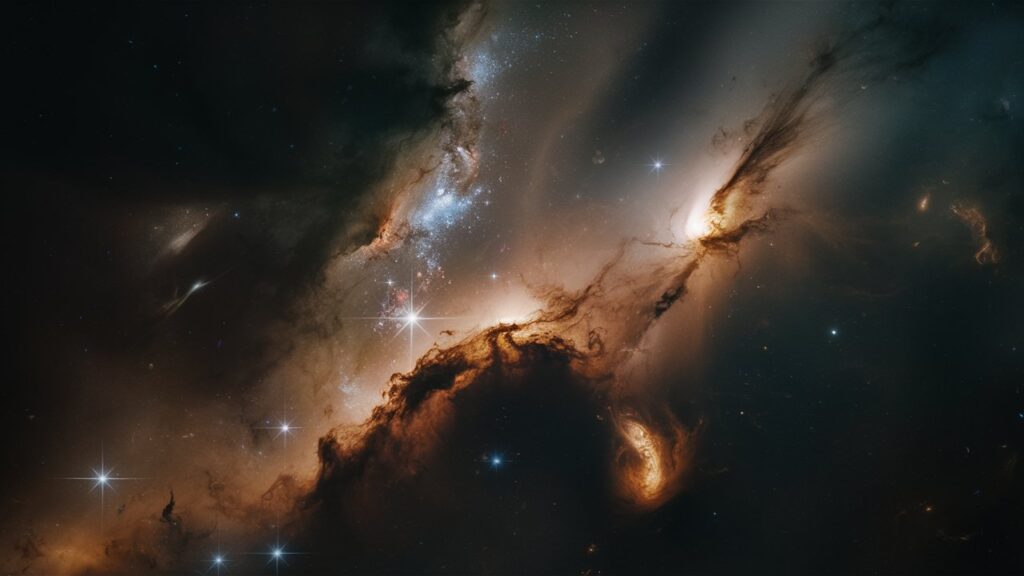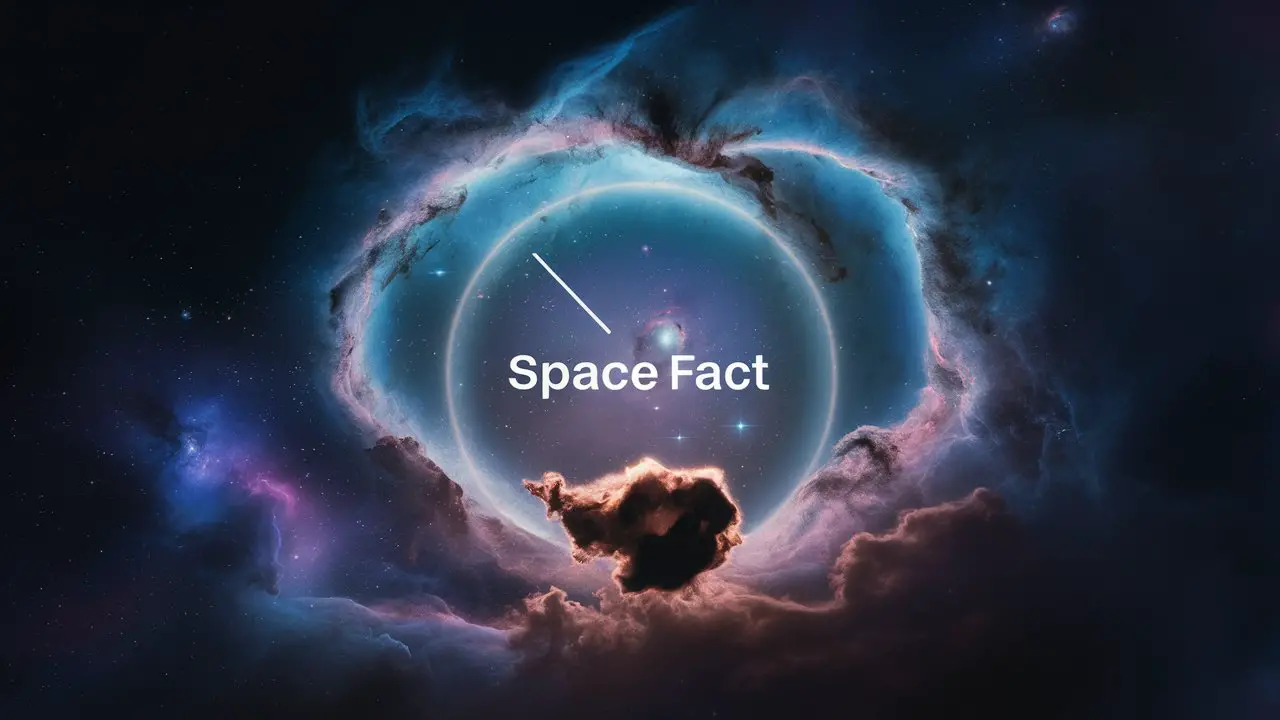You look up at the night sky and see the stars twinkling and the moon glowing. It’s beautiful but what’s really out there in outer space? There’s so much more beyond what our eyes can see. Get ready to have your mind blown with some out-of-this-world facts about space that will make you realize how amazing and mysterious it really is. From cool info about black holes to crazy moon myths, these fascinating space facts will amaze you and give you a whole new perspective on the final frontier. After reading this, you’ll be an amateur astronomer and be able to impress your friends with your newfound knowledge of the mysteries and wonders of the universe. Let’s launch into 10 fun facts you probably didn’t know about space!
Space Is Big, Really Big: 10 Interesting Facts About the Size of Outer Space
The universe is infinitely expanding.
The universe has been expanding since the Big Bang and space itself is stretching. Scientists predict the universe could expand forever at an accelerating rate. Talk about vast!
There are billions of galaxies.
Our night sky shows a tiny fraction of what’s out there. Astronomers estimate there are between 100 to 200 billion galaxies in the observable universe. And each galaxy contains billions of stars. Mind-boggling.
The largest known galaxy contains 100 trillion stars.
The IC1101 galaxy is a staggering 6 million light years in diameter, with 100 trillion stars – the largest known galaxy discovered. Contrast that with our Milky Way which is a measly 100,000 light years across and has a few hundred billion stars.
The largest star is 1,800 times bigger than our sun.
VY Canis Majoris, a red hypergiant star in the constellation Canis Major, is one of the largest stars known. It’s 1,800 times the size of our sun – so huge that if it replaced the sun, its surface would extend out to the orbit of Saturn. Talk about a big ball of burning gas!
The deepest known point in our ocean is almost 7 miles down.
The Mariana Trench in the western Pacific Ocean is almost 7 miles deep – deeper than Mount Everest is high. The immense pressure at that depth is equivalent to an elephant balancing on a postage stamp. Despite its depth, scientists still don’t fully understand what mysterious creatures inhabit the extreme conditions of the trench. The deep sea remains largely unexplored.
The hottest place in the solar system is 900°F.
With daytime temperatures of up to 900°F, the surface of Venus is hot enough to melt lead. Its dense atmosphere of toxic gases including sulfuric acid creates a runaway greenhouse effect, trapping heat and making it hotter than Mercury despite being further from the sun. Definitely not the place for a summer vacation!
Microgravity Madness: 5 Fun Facts About Zero Gravity in Space
Ever wonder what it’s like to experience weightlessness? Astronauts get a chance to float free on the International Space Station. Here are a few fascinating facts about microgravity:
Objects float aimlessly
In space, there’s no up or down, so dropped objects don’t fall – they just float in mid-air! Astronauts have to be really careful not to lose things. Can you imagine chasing a floating pen or losing your favorite snack?
Fluids act strangely
In microgravity, liquids don’t pour like on Earth. Without gravity, they form spheres that float around. Astronauts have to drink from special containers with straws to avoid splattering themselves with floating blobs of juice!
Fire burns differently
On Earth, hot air rises, but without gravity the hot air has nowhere to go. So, fires in space burn in a perfect sphere. NASA studies how fires start and spread in space to improve fire safety for space missions.
Bodies change shape
In microgravity, the human body doesn’t experience the normal forces of gravity. Astronauts can gain height as their spines decompress. Their faces also become more rounded as fluids shift upward. These changes are temporary, but show how much our bodies adapt to living on Earth.
Balance is off
Astronauts have to re-learn how to move and work in weightlessness. Simple actions like turning, stopping, and controlling tools become challenging without the balance cues we get from gravity. Space agencies put astronauts through intensive training to prepare them for moving in space.
With no up or down and all the objects and fluids floating about, microgravity creates a bizarre environment unlike anything on Earth. Exploring the weird and whimsical effects of weightlessness gives us a new appreciation for the familiar forces of gravity on our planet.
To Infinity and Beyond: 5 Fascinating Facts About Space Travel
Traveling to space is one of humanity’s greatest adventures. As private space travel becomes a reality, space could become more accessible to ordinary people like you and me. But space remains a mysterious place. Here are some out-of-this-world facts about space travel that will boggle your mind.
Space travel is expensive
It costs between $50 million to $100 billion to send astronauts into space. SpaceX’s Falcon Heavy rocket, the world’s most powerful rocket, costs $90 million per launch. The cost is mind-boggling because space travel requires highly advanced technology and equipment to overcome Earth’s gravity and reach speeds of over 17,500 mph to enter low Earth orbit.
Astronauts grow taller in space
When astronauts travel to space, their spines extend up to 3% due to the lack of gravity compressing their vertebrae. However, this height gain is only temporary. Once astronauts return to Earth, their height returns to normal as gravity causes their spines to compress again.
Space travel can be dangerous
Space travel is an extreme sport that is not for the faint of heart. Astronauts face many potential dangers like exposure to high radiation levels, microgravity, isolation, and space debris collisions. Spacecraft also have to endure the immense heat and forces during launch and re-entry into Earth’s atmosphere.
Space sickness is real
Many astronauts experience space adaptation syndrome, commonly known as space sickness, during the early days of space travel. The lack of gravity causes fluids to shift in the body, resulting in nausea, vomiting, vertigo, and other disorienting symptoms. Space sickness usually subsides once the body adapts to microgravity, but medications and acupuncture are provided to relieve symptoms.
You can see satellites and the International Space Station
If you look up at the night sky, you may be able to see the International Space Station or satellites as they orbit Earth. The space station looks like a fast-moving plane or very bright star. Satellites also look like moving stars, but they travel in a straight line across the sky. You can use satellite tracking apps and websites to spot when the ISS or satellites will be visible from your location.
Gazing at the Stars: Cool Facts About Constellations and Galaxies
Have you ever gazed up at the night sky and wondered what’s out there? Space is filled with celestial wonders like constellations, galaxies, and nebulae. Here are a few fascinating facts about these stellar phenomena:
Constellations: Connecting the Dots
Constellations are patterns of stars that people have connected like a cosmic dot-to-dot. Many constellations date back to ancient times and represent mythological figures. For example, Orion the Hunter and Ursa Major (the Big Dipper) were recognized by the Greeks and Romans. New constellations are still being discovered today using powerful telescopes.
Our Milky Way Galaxy
The Milky Way is our home galaxy, containing between 200 and 400 billion stars. It’s a spiral galaxy, meaning it has a central bulge of stars with a rotating disc of stars and gas surrounding it. If you’ve ever seen the Milky Way’s cloudy band of light stretching across the night sky, you were gazing at the combined light of billions of stars in our galaxy’s disc.
Galaxies Galore
The universe contains billions of galaxies beyond our own. Elliptical galaxies are spherical clusters of old stars, while spiral galaxies like the Milky Way have a rotating disc of stars and gas with new star formation. Irregular galaxies have no defined shape or structure. The largest known galaxy is IC 1101, which is 6 million light years across and contains 100 trillion stars.
Nebulas: Stellar Nurseries
Nebulas are giant clouds of gas and dust where stars are born. As new stars form, their light illuminates the nebula, creating mesmerizing patterns and colors. The Orion Nebula is one of the brightest nebulae, visible with the naked eye. Nebulas contain the raw materials needed for new solar systems and planets.
Gazing at the stars fills us with wonder about the scale and beauty of the universe. The night sky holds endless celestial treasures waiting to be discovered. So next time there’s a clear night, grab a blanket and head outside. You never know what cosmic wonders you might uncover.

Don’t Miss Out on Wealth-Building Secrets: Read The Wealth Signal!
Space Facts FAQ: Answering All Your Burning Questions About Outer Space
How far is the moon from Earth?
The moon is about 238,900 miles or 384,400 kilometers from Earth. That’s a long way! Light from the moon takes about 1.3 seconds to reach us. Despite the immense distance, you can still see the moon with your naked eye. Early astronomers were able to figure out the moon’s distance using geometry.
How hot is the sun?
The surface of the sun is unbelievably hot, about 10,000 degrees Fahrenheit or 5,500 degrees Celsius. But the corona, the sun’s outer atmosphere, is even hotter at about 2 million degrees Fahrenheit. The intense heat and energy of the sun come from nuclear fusion reactions in its core. The sun converts over 4 million tons of matter into energy every second!
What are stars made of?
Stars, including our sun, are massive balls of plasma made primarily of hydrogen and helium gases. As the gases heat up and fuse together, they release energy in the form of light and heat. The fusion reactions in the core of stars are what make them shine. When stars die, the material they eject into space provides the building blocks for new stars and planets. We are all made of stardust!
How many planets are in the solar system?
There are currently eight planets in our solar system: Mercury, Venus, Earth, Mars, Jupiter, Saturn, Uranus and Neptune. For many years Pluto was also considered a planet but is now classified as a “dwarf planet.” The planets orbit around the sun, held in place by its strong gravity. The four inner terrestrial planets are small, dense and rocky. The four outer gas giants are huge balls of hydrogen and helium. Beyond Neptune, there is a vast collection of icy objects in the Kuiper Belt, including Pluto.
What causes the northern lights?
The northern lights, also known as the aurora borealis, are caused by the interaction of charged particles from the sun with the Earth’s magnetic field and atmosphere. During solar storms, the sun ejects huge amounts of protons and electrons into space. When these particles collide with gases in our atmosphere like oxygen and nitrogen, they excite the gases and cause them to glow. The colors we see depend on which gases are hit. Most often we see greens from oxygen and reds from nitrogen.





